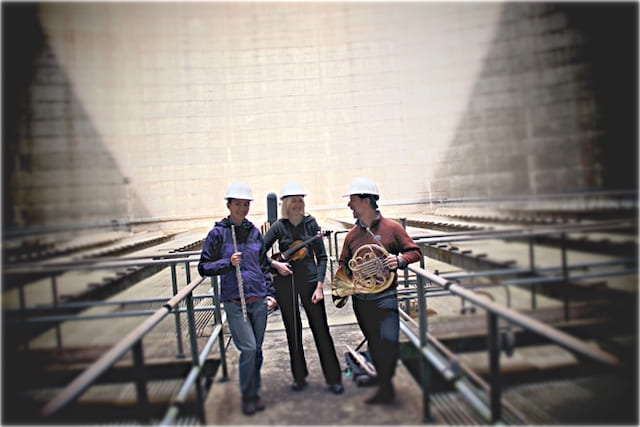Long a friend of the PMC, Polish-American composer Ewa Trębacz is based at the DXARTS Center for Digital Art and Experimental Media in Seattle, Washington. Having already invited Trębacz to participate in the 2011 ‘New Generation’ Concert at USC, we are excited to hear of her latest activities. Thus she is the next in our series spotlighting how Polish musicians have met the challenges of a pandemic.
This past summer, Trębacz began a fruitful relationship with the prestigious BabelScores contemporary music library. The French-based BabelScores project arose from the need to diffuse and promote contemporary music from the last 40 years, and make information more easily available to musicians, composers, producers and scholars. Through this powerful online circulation platform, hand-picked scores of the most creative, original and innovative composers of the past few decades are made available for research and purchase worldwide.
Given the ephemeral and diverse nature of digital media and new forms of music, digital archives like Babel Scores are the only future of publishing. The future is already here. Glad to be a part of it.
– Ewa Trębacz
Although all concerts in the 2020-21 season were cancelled or postponed, Trębacz has continued to create and collaborate. Exploring the unique interaction between the musician and their acoustic environment, Trębacz often uses space as a catalyst for improvisation, working through Ambisonic recording sessions in acoustically inspiring spaces. One such interesting project was based on pre-pandemic recordings made in an abandoned nuclear plant in Satsop, Washington.
In Seattle there is a concert space called Chapel Performance Space, which local artists utilize for experimental music concerts. During the pandemic, Nonsequitur—the organization that runs the Chapel space and fills it with music through its Wayward Music Series—decided that instead of the normal 10 concerts per month, they would commission local artists to submit 30-minute music material to present on their Soundcloud. Thus the ‘Wayward in Limbo’ series was born. According to Trębacz, “this way they inspired and created quite an amazing archive of artistic activity during the pandemic, and frankly—they kept the music community alive.”
Using the recordings made at the former nuclear plant, Wayward in Limbo #119: The Tower of Broken Mirrors was created and highlighted in the ‘Wayward in Limbo’ series. The recordings feature Josiah Boothby on French horn (who also performed at the ‘New Generation’ Concert) and Leanna Keith on flutes, with Ewa Trębacz performing violin and electronics. Trębacz then mixed in more electronics for additional flavor, and blended it all together. All of the sounds were recorded, processed and mixed in Ambisonics by the composer, although the version presented in the Wayward series is a binaural mix.
Please enjoy these excellent online offerings while we look forward to hearing Ewa Trębacz’s fascinating music in person again!
[Sources: Facebook.com, ewatrebacz.com, www.waywardmusic.org]
